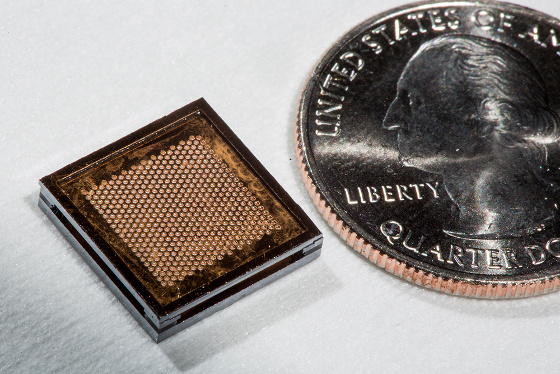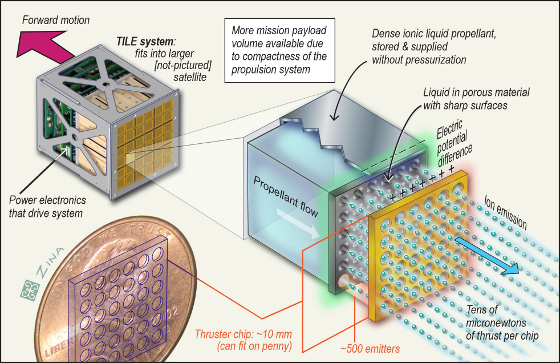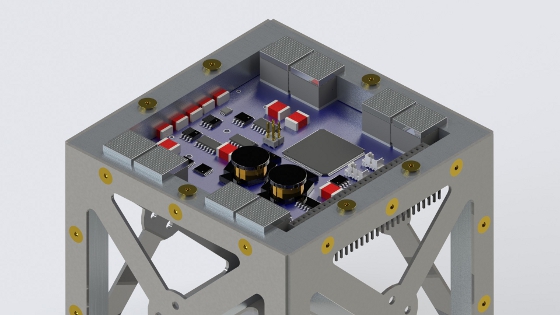 |
| May 05, 2020 | Volume 16 Issue 17 |
Designfax weekly eMagazine
Archives
Partners
Manufacturing Center
Product Spotlight
Modern Applications News
Metalworking Ideas For
Today's Job Shops
Tooling and Production
Strategies for large
metalworking plants
Postage stamp-size ion propulsion system gets NASA, DoD, and Boeing HorizonX funding

In-space propulsion system pioneer Accion Systems has raised $11 million in Series B funding. The effort was co-led by Boeing HorizonX Ventures and Shasta Ventures. The Series B round brings Accion's total funding to date to $36 million, which includes $14 million in U.S. Dept. of Defense and NASA contracts. The new capital will be used to ramp up production of Accion's next-generation product and to expand hiring.
Spun out of Massachusetts Institute of Technology (MIT) in 2014, Accion's TILE (Tiled Ionic Liquid Electrospray) propulsion system aims to increase the lifespan and maneuverability of satellites and other vehicles in space. The system leverages a non-toxic, ionic liquid propellant and postage stamp-size thrusters.
Accion's propulsion uses a smaller and lighter liquid ion technology that uses less power without sacrificing performance. Accion removed the heavy tanks, pumps, valves, toxic propellants, external cathodes, and ionization chambers found in conventional electric propulsion systems and created a new ion engine -- one that's lighter, more efficient, more powerful, and manufactured hundreds of units at a time.
The TILE system is built around a thruster "chip" architecture. Each chip houses hundreds of microscopic emitters that produce beams of ions generated from the novel ionic liquid propellant source (a safe, non-toxic, non-explosive liquid salt).

Similar to traditional ion engines, the system produces thrust by using electric fields to accelerate ions. Ions leave the thruster chips through small holes in the extractor grids over each chip and propel the spacecraft in the opposite direction.
Accion says the conversion efficiency of their system is up to 60 percent higher than traditional plasma thrusters. No external cathode or propellant heaters are needed, which means the draw for that additional power is eliminated. The thermal stability of the ionic liquid ranges from -100 C to 400 C. The technology also allows for a much greater thrust density compared to conventional electric propulsion options, according to its developers.

"At the size of a postage stamp, our propulsion system is re-writing the rules of smallsat navigation and maneuverability," said Natalya Bailey, CEO of Accion Systems. "We're excited to ramp up production and offer our clients benefits such as extending mission lifetime, station-keeping, and de-orbiting capabilities."
Being able to actively de-orbit satellites is important to limit future space junk.
Accion was recently one of 14 companies selected by NASA as part of its Tipping Point partnership for Moon and Mars technologies. Accion's in-space propulsion system will be used on replicas of the MarCO CubeSats, NASA's first CubeSats that traveled on an interplanetary mission.
Accion will work with NASA's Jet Propulsion Laboratory (JPL) to replace the cold gas propulsion system that was used on the MarCO CubeSats with a more efficient ion electrospray propulsion system. Accion received $3.9 million for the project, which was successfully kicked off in January 2020 and will launch in the summer of 2021.
Source: Accion
Published May 2020
Rate this article
View our terms of use and privacy policy
